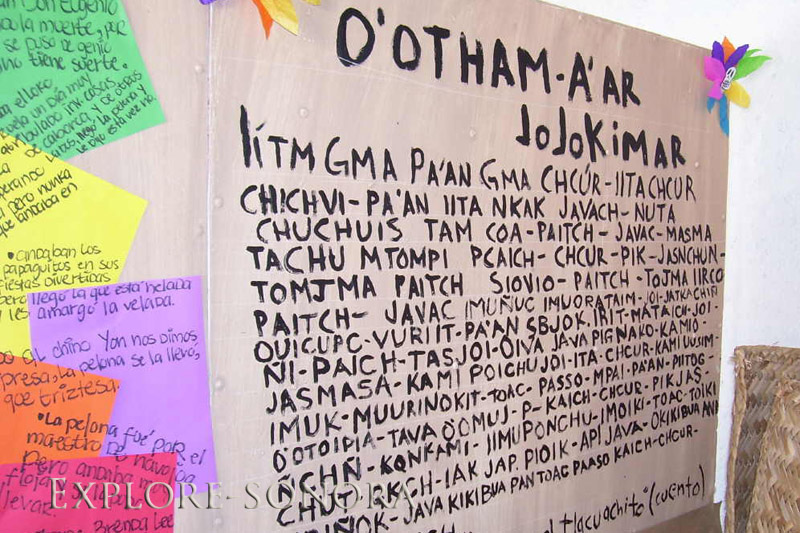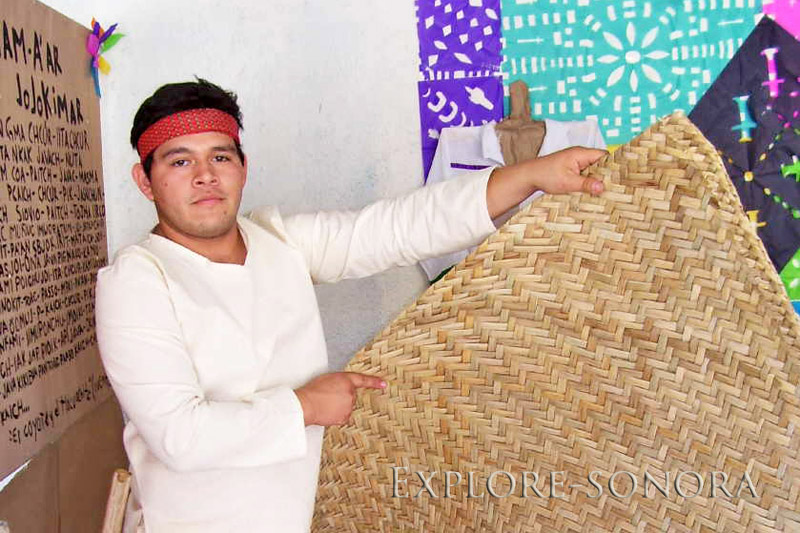Sonoran Indigenous Groups
Tohono O’odham – Papagos
The Tohono O’odham are a binational ethnic group, since their territory was divided by the border between the United States and Mexico. The Mexican Tohono O’odham reside in the Altar Desert of Northern Sonora, in the municipalities of Altar, Caborca, Magdalena, Plutarco Elías Calles, Puerto Peñasco, Pitiquito, Oquitoa, Sáric, Atil, Trincheras and Tubutama.
During the Spanish colonization of the region, the O’odham peoples were known a “Pimas Altos” (high Pimas). In the 19th century they became known as Papagos, which means “bean eaters,” referring to their main staple food. They then changed their current name, which means “people of the desert.”
For centuries the Tohono O’odham have lived an agricultural existence, one that was influenced and assisted by Jesuit missionary Padre Eusebio Francisco Kino in the late 1600’s and early 1700’s. Kino established several missions in O’odham territory, including San Antonio Paduano del Oquitoa, San Pedro y San Pablo del Tubutama, Santa Maria Magdalena, Santa Gertrudis del Sáric, Santa Teresa de Atil, La Purísima Concepción de Nuestra Señora de Caborca, San Valentín del Bizani and San Diego del Pitiquito
Language
The native language of the O’odham is linguistically related to that of the Pima Indians. The two languages constitute the Pimano, or Tepimano range of Nahua-Cuitlateca branch of the Yoto-Nahua language group. There are also dialectical variations of the Tepehuanos (Odam), and also with the Taracahitas languages of Mayo, Yaqui, Tarahumara, Guarijio and Opata).
Like many native Sonoran cultures, their language is being lost, as fewer young people speak their native tongue.
Art and Crafts
Tohono O’odham artisans are known for their wood carvings and pottery. They also make fine weavings from torote and palm leaves, known as “coritas.”
Rituals and Ceremonies
Their ritual ceremonies involve dances and songs, and many are to ask for basic needs such as rain. O’odham cultural traditions include elements of mythological beliefs, such as their view of the world’s creation by two supernatural powers who created many human races, and then destroyed them.
A lagoon located north of the O’odham pueblo of Quitovac is sacred for them. Their tribal lore tells that an ancestor was allowed to eat a snake that inhabited the lake, a sacrifice that allowed the tribe to continue to survive and occupy its native territories.
The Vi’ikita, or “cucu” festival, is a ceremony with major importance for the O’odham. It is celebrated in July and the feast day of San Francisco on October 4.
Other traditional festivals include the bi’ikita, celebrated in Quitovac on July. Also, deer hunting (khuijin) is a tradition continued during the summer in the area of the La Angostura Dam (Presa La Angostura), also known as the Lázaro Cárdenas Dam.
The Tohono O’odham also celebrate some festivals of the Christian liturgical calendar, such as: The feast day of San Francisco (October 4); Semana Santa (Holy Week, before Easter); the feast day of the Assumption of Mary (August 15); Day of the Dead (Día de Muertos) in November; and the feast day of San Francisco Xavier on December 3.


